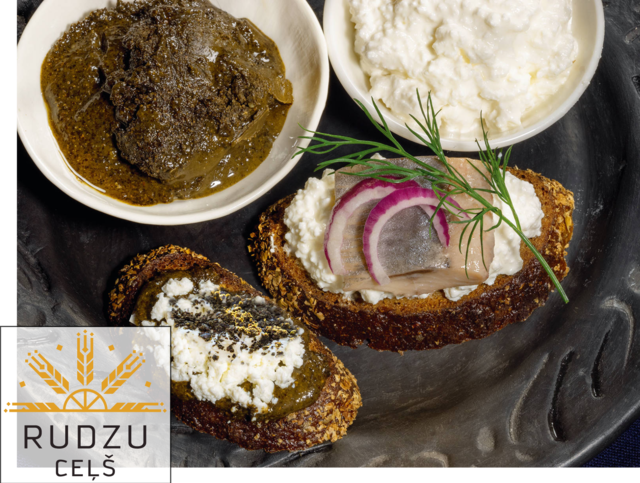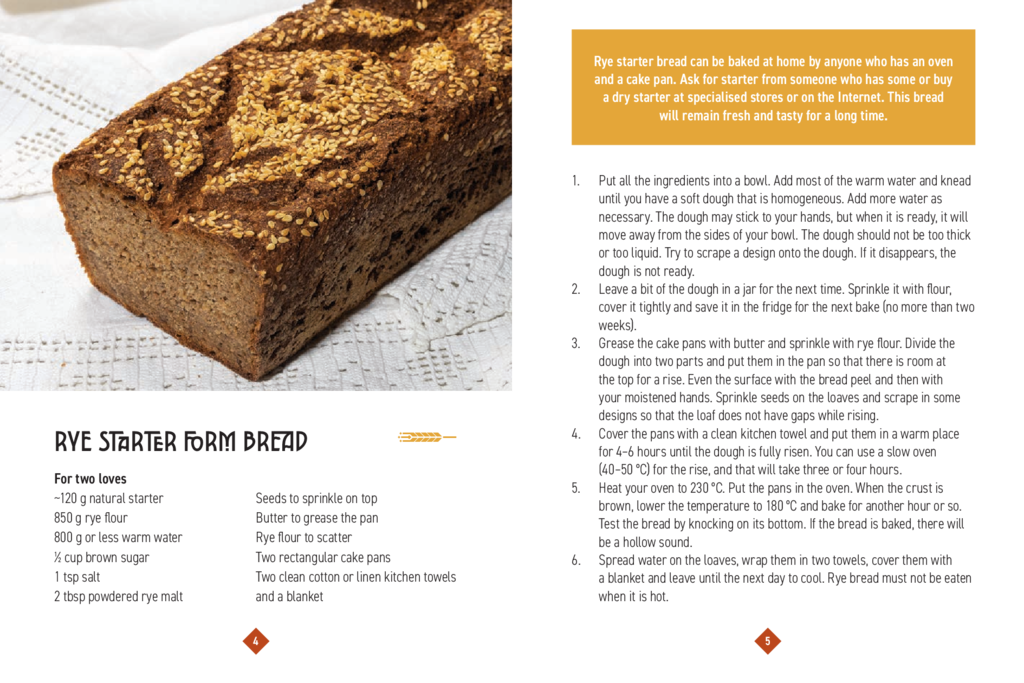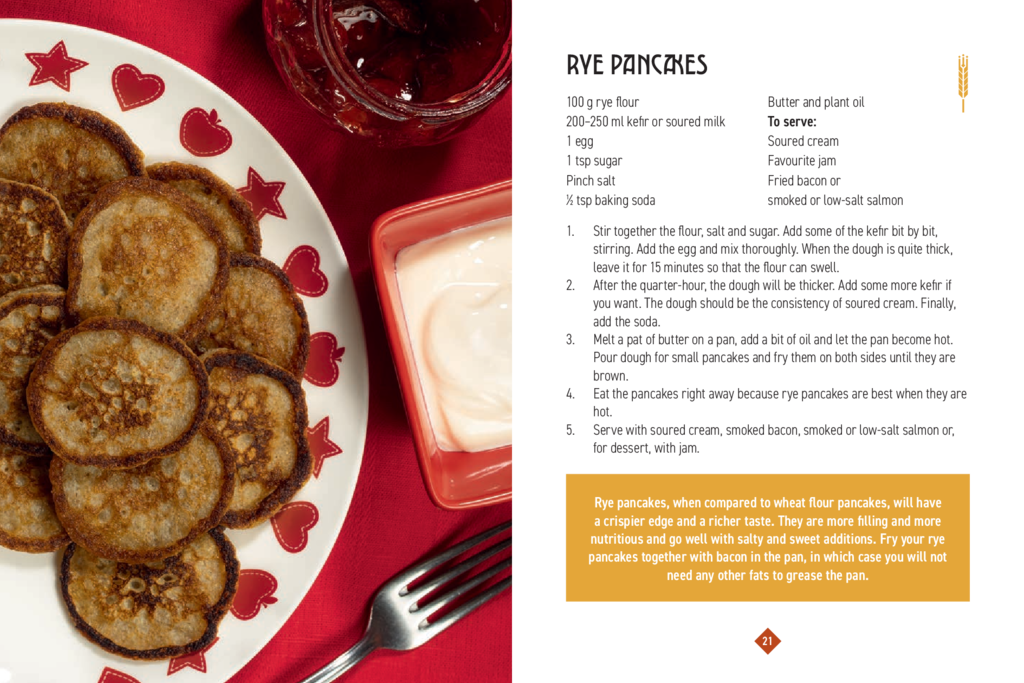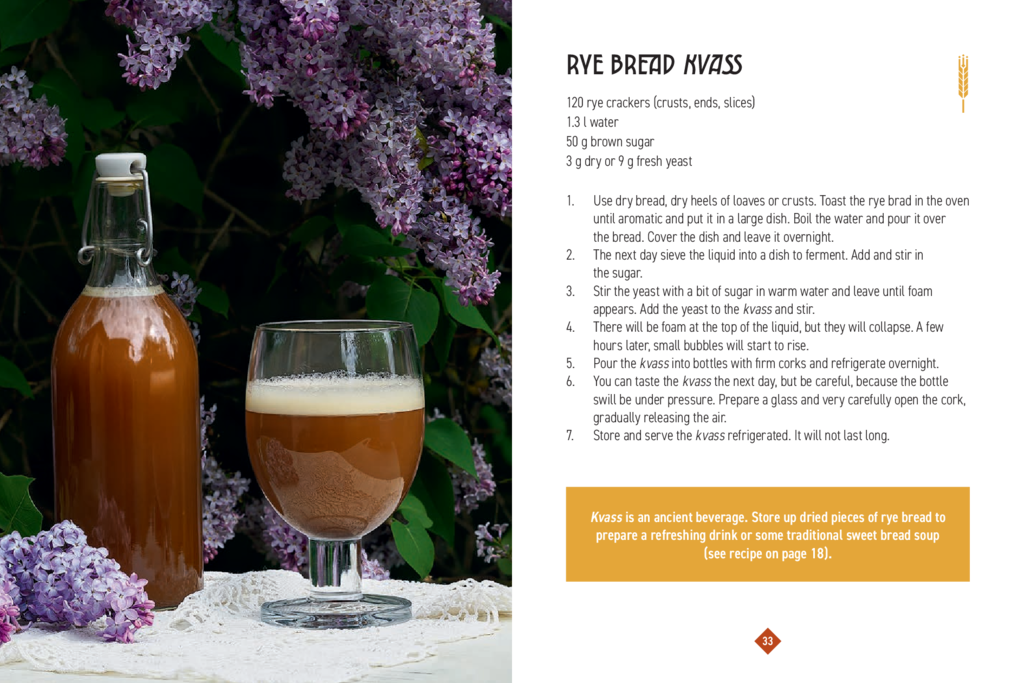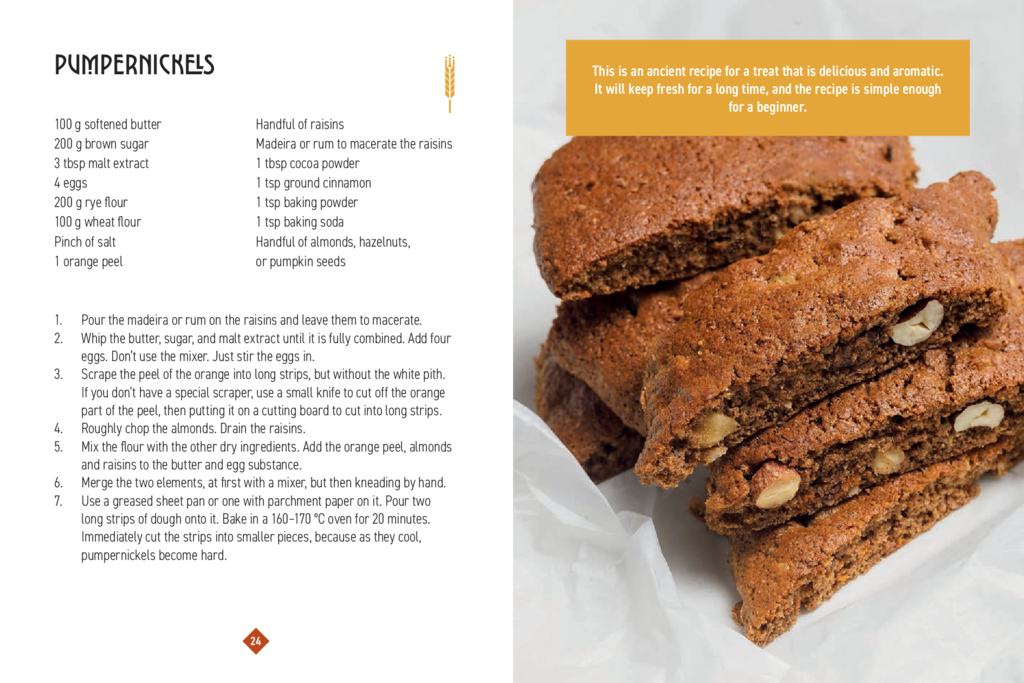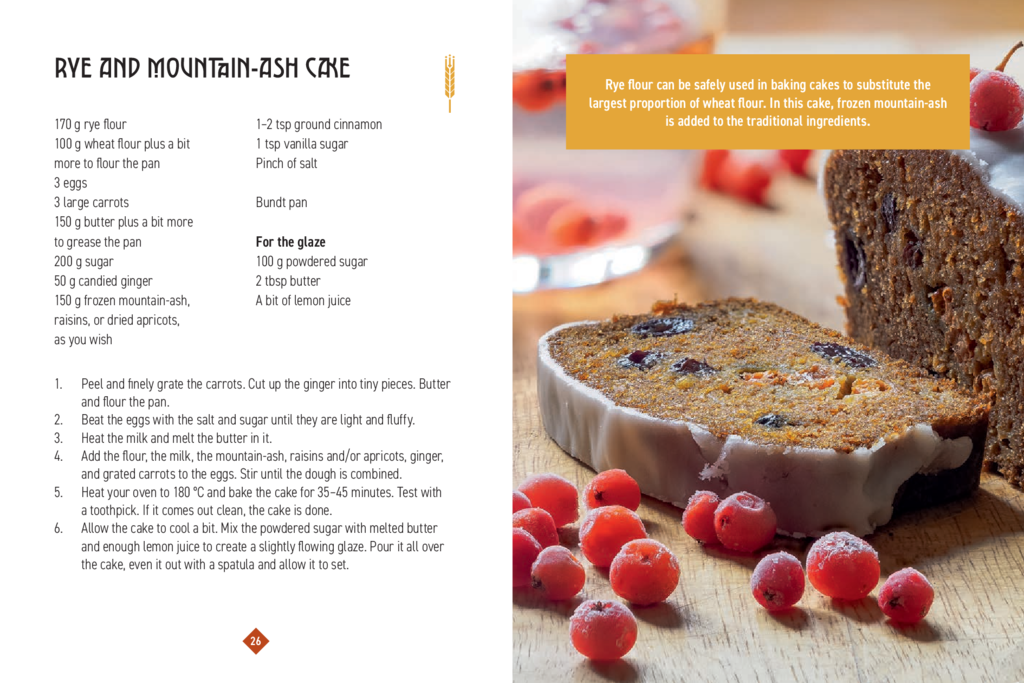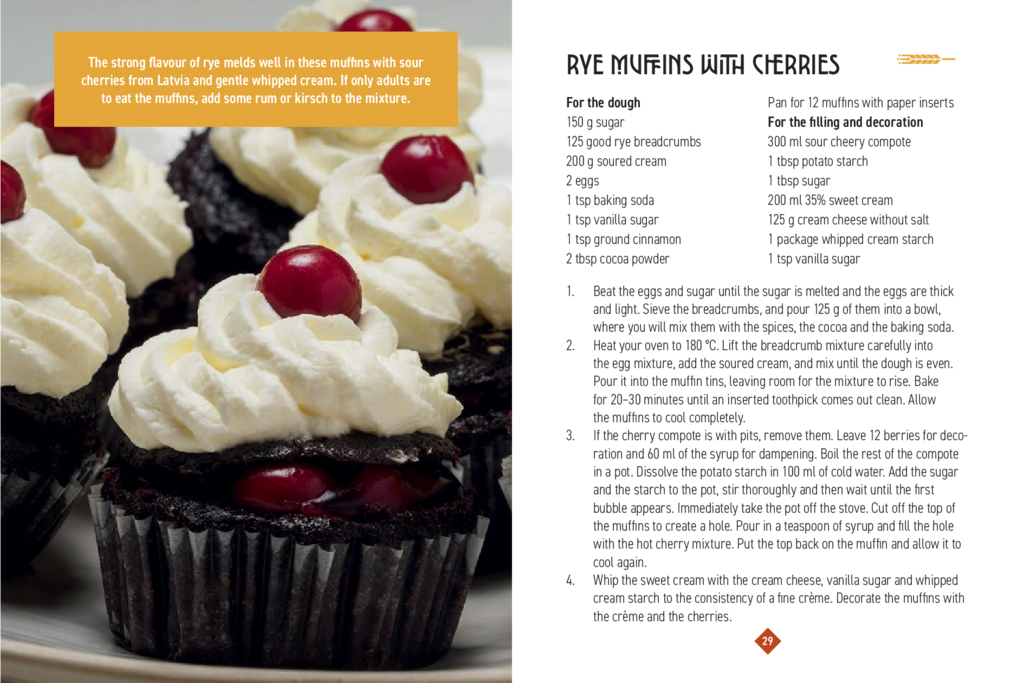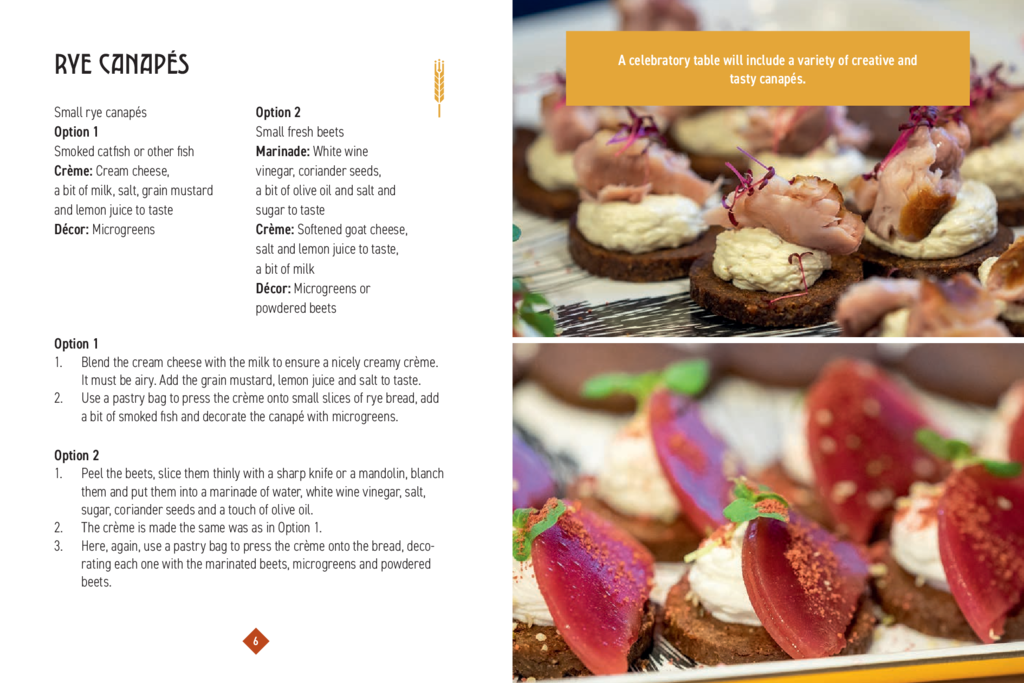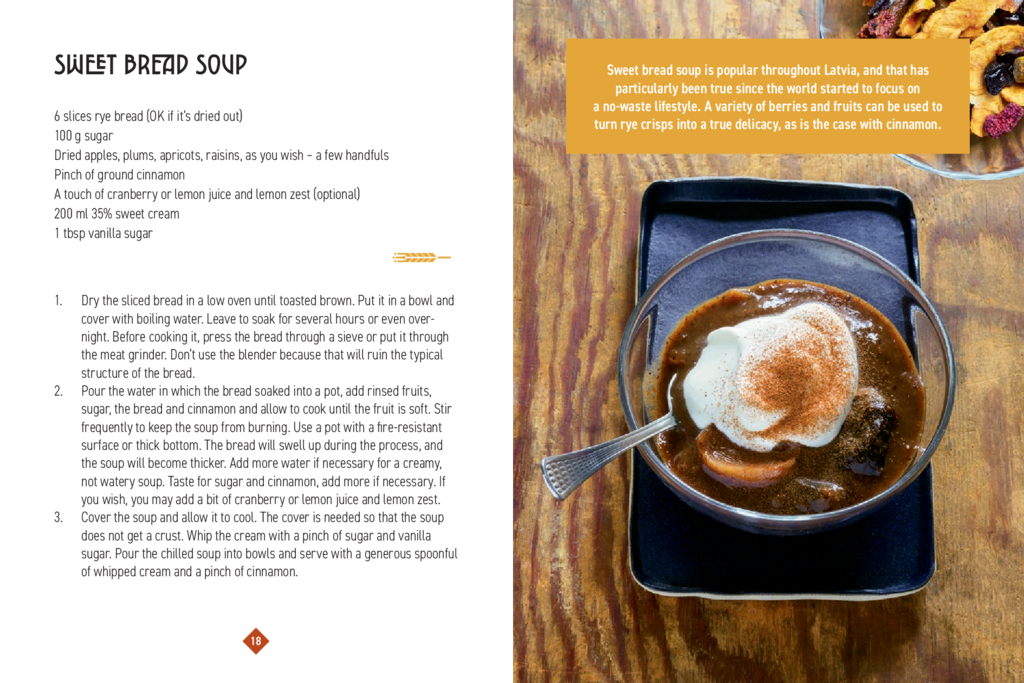Dishes
Rye Grain and Rye Flour Dishes
Influenced by the principles of a healthy diet, we often return to our grandmother's recipes that contain whole grain flour or just whole grains. Although rye bread has a strong and particular flavour, it goes extremely well with other products, thus creating a new experience for your taste buds. Skilful chefs will know how to turn stale rye bread into truly delicious dishes. The following desserts are perfectly in line with the latest zero waste lifestyle trends, suggesting great ways for using the piled up rye bread heels and crusts.
- Salinātā Rye Bread
- Sourdough Tin Loaf
- Rye Flour Pancakes
- Veisteknis Bread
- Pies and Small Cakes
- Sklandrausis
- Rye Flour Gingerbread Biscuits
- Rye Crackers
- Rye Bread Layer Cake
- Shepherd's Bread
- Rye Bread Kvass
- Pumpernickels
- Rye and Mountain-ash Cake
- Rye Muffins with Cherries
- Rye Roll Biscuit Cake
- Layered Rye Bread Dessert
- Rye Bread Appetisers
- Rye Croutons
- Sweet Rye Bread Soup
Rye Grain and Rye Flour Dishes
Influenced by the principles of a healthy diet, we often return to our grandmother's recipes that contain whole grain flour or just whole grains.
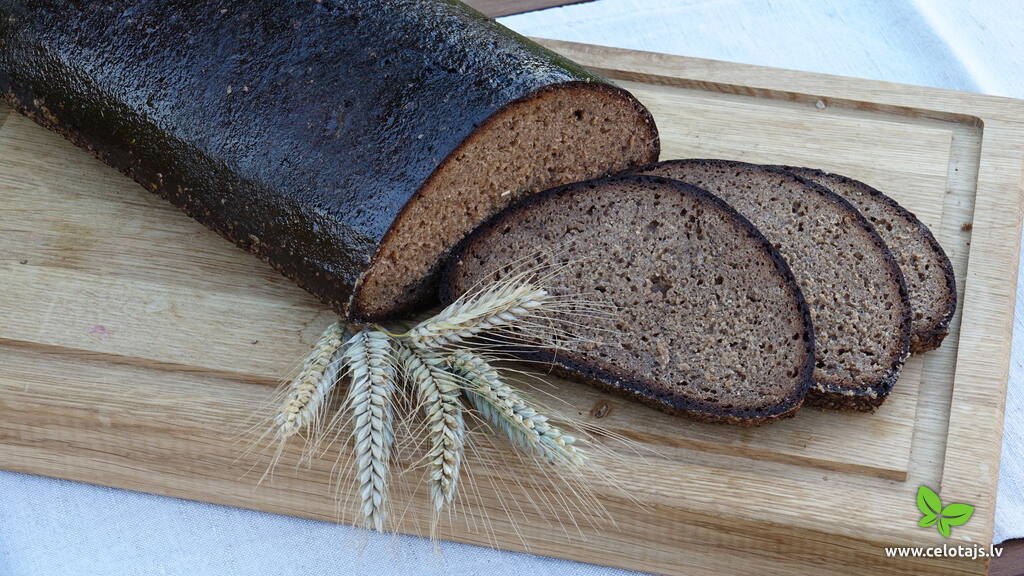 |
SALINĀTĀ RYE BREAD. It has a deep, dark colour, a pleasant aroma of baked bread and caraway seeds, and a sweet and sour rye bread flavour. Salinātā means that it has been made sweeter, for example, by scalding flour with hot water. This is an old word that is most commonly used in the Kurzeme region, where rye bread was called salinātā bread or long bread. Baking traditional rye bread takes two days. The flour is scalded with boiling water and the dough is mixed with sourdough in a wooden dough trough, adding malt and caraway seeds. Sugar is also added to the dough, as it intensifies the fermenta - tion process and gives the bread its special sweet and sour flavour that is not typical for rye bread baked in other countries. More info about salinātā rye bread. |
|
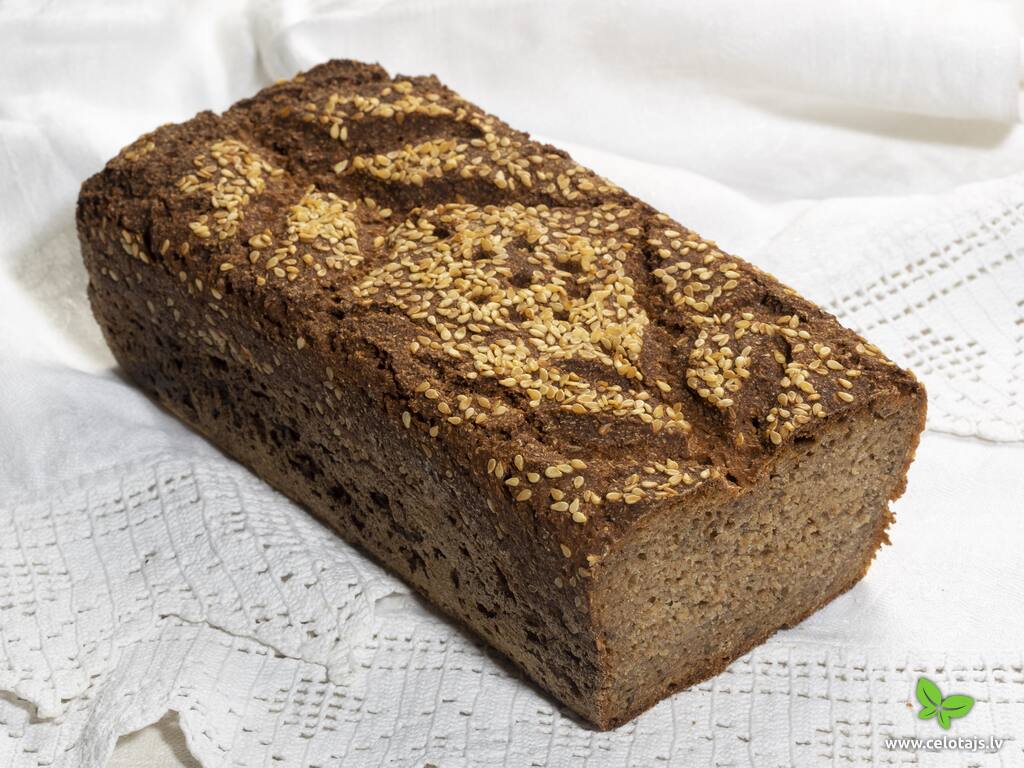 |
SOURDOUGH TIN LOAF. Nowadays, Latvians are baking sourdough tin rye bread at home more and more often. Unlike real traditional rye bread, it can be baked in a normal electric oven. The dough is made from rye flour by adding natural sourdough, salt, sugar and warm water. If desired, malt extract, caraway seeds, and other seeds can be added for a special flavour. Kneading this dough is relatively easier. The dough is divided into baking tins and marked with patterns on the top. The classic rye bread mark is the cross of crosses (the Māra cross), but each baker can choose their own pattern as their signature. The bread is left to proof in the tin for several hours, baked for a little longer than an hour, then taken out of the tin, covered and left to cool until the next day when it can be eaten. |
|
 |
RYE FLOUR PANCAKES. Rye flour makes great pancakes with crisp edges and a pleasant texture. Make the batter with kefir or milk as the base, add eggs, a pinch of salt, a little bit of sugar, and bicarbonate of soda or baking powder, then leave it to rise. Cook small pancakes in a hot pan and enjoy them with sour cream, jam or fresh berries. You can also cook savoury rye pancakes and serve them with sour cream and salmon or herring. Savoury rye pancakes are also great with a mushroom sauce. If you wish to make big and thin pancakes, add wheat flour to the rye flour. |
|
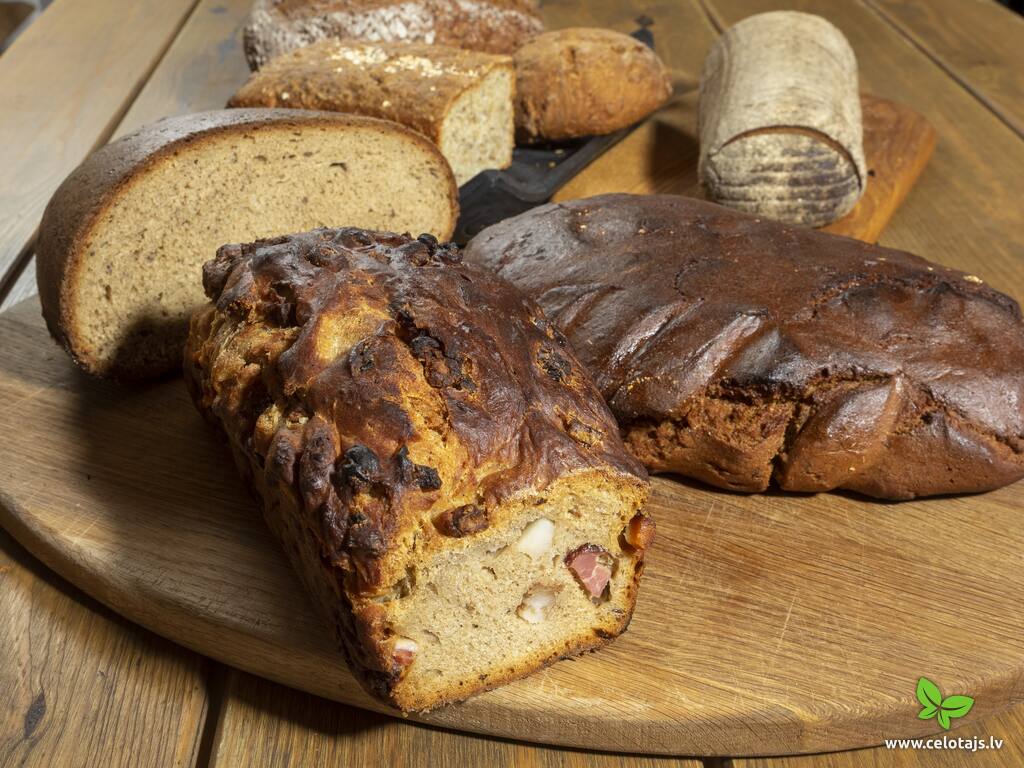 |
VEISTEKNIS BREAD. Veisteknis is a type of rye bread that is baked in the Latgale region according to an ancient recipe. The dough is made in a similar way as for traditional rye bread, which is by pouring boiling water over rye flour, adding salt, sugar, caraway seeds, and sourdough, then thoroughly kneading it and proofing it for a long time in a warm place. When the proofing stage has finished, small pieces of smoked bacon are added, loaves are formed and then baked in a hot oven. Onion pieces can also be added to the dough. This kind of bread is perfect for long journeys, when performing manual labour or during active leisure activities in fresh air. It is more filling than ordinary bread, it stays fresh for longer and is also very tasty without any toppings. Even just a chunk of it can be a tasty and substantial meal! |
|
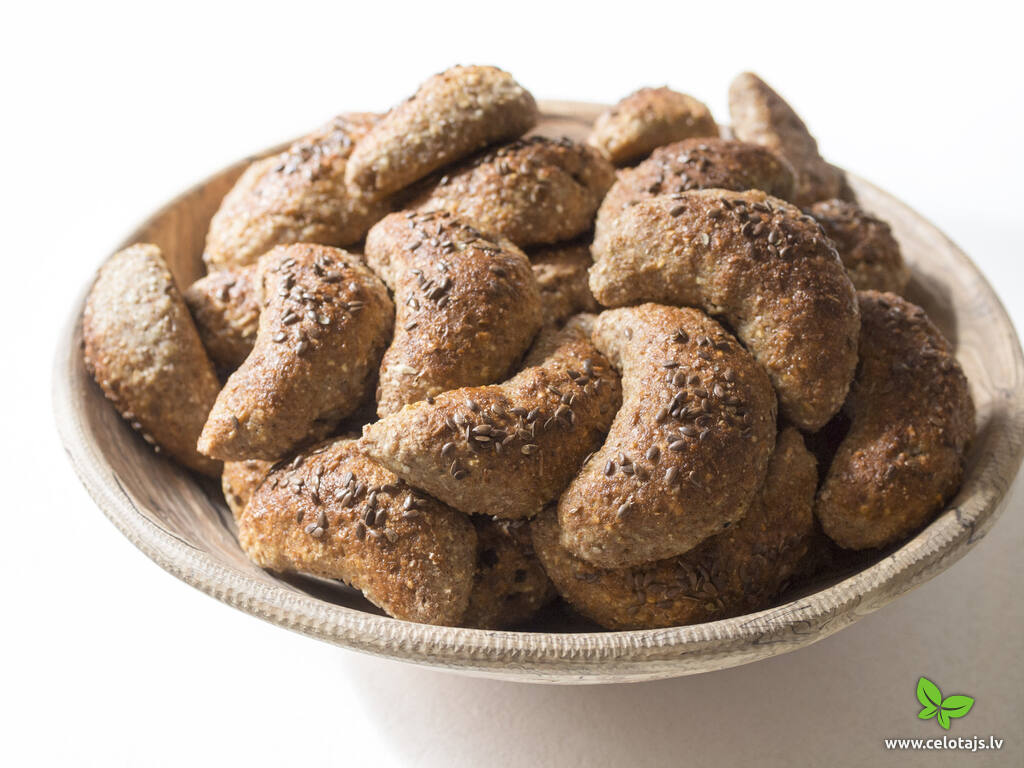 |
PIES AND SMALL CAKES. Latvian celebrations are unimaginable without the small bacon pies, and they can also be baked from rye dough, stuffing it with smoked bacon cubes that have been fried together with onions. There are many interesting baking traditions in the different Latvian regions. Kakorka is made in Latgale by putting smoked meat slices on round bases of rye dough, whereas krapavņīks, another Latgalian speciality, is made by spreading grated carrots, fried with salt and butter, on similar bases of dough and then baking these small cakes in the oven. Both of these specialities are sometimes referred to as Latgalian pizzas. Meanwhile in Kurzeme, small cakes called plades are made from leftovers of rye dough by spreading sour cream and sugar, carrots or bacon over them. Little rye dough ducklings are often baked for children to enjoy. Both the pies and the traditional small cakes are to be consumed soon after baking. |
|
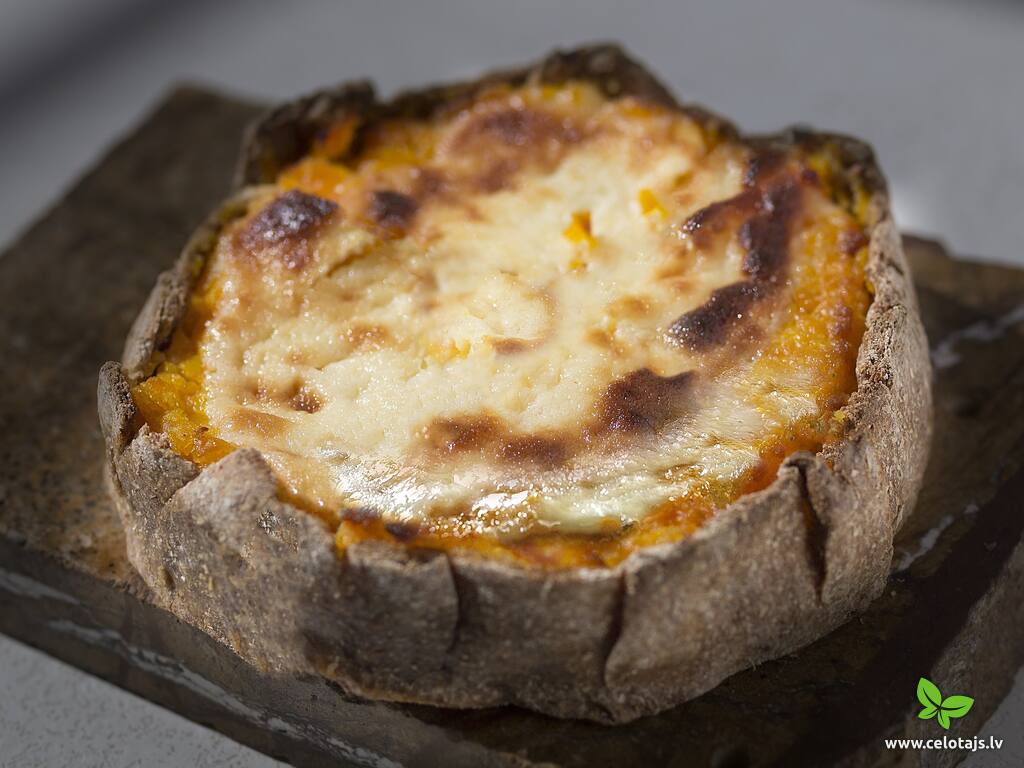 |
Sklandrausis is registered in the European Commission scheme "Traditional Specialities Guaranteed" (EU Regulation No. 978/2013). |
|
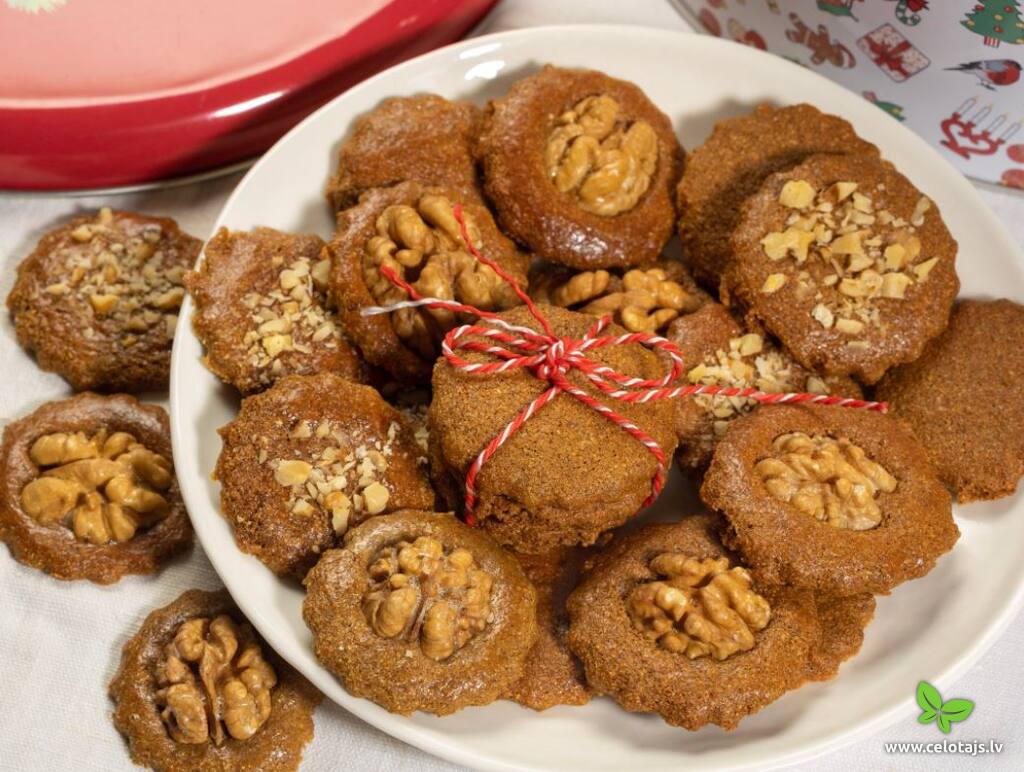 |
RYE FLOUR GINGERBREAD BISCUITS. Rye gingerbread biscuits are delicate and traditional winter solstice snacks. The dough is prepared by heating honey, sugar, and butter together with ground spices such as cinnamon, cloves, coriander seeds, allspice, black pepper and nutmeg. Cardamom, ginger, or even coriander or grated lemon zest will also complement the flavours nicely. When the sugar has melted, add bicarbonate of soda and let the mixture cool down slightly. Then add eggs and flour, knead the dough, wrap it up and leave it to rest. Before baking, roll the dough out very thin and, using biscuit cutters, make various shapes of biscuits. If you wish the finished biscuits to have a shiny surface, brush beaten egg over them; however, rye dough biscuits also look beautiful after baking with no glaze. While baking, their characteristic and tempting aroma will fill your home with a truly festive feel. For the gingerbread biscuits to stay crunchy, they should be stored in an airtight container. Due to their low moisture, these biscuits keep for several months. |
|
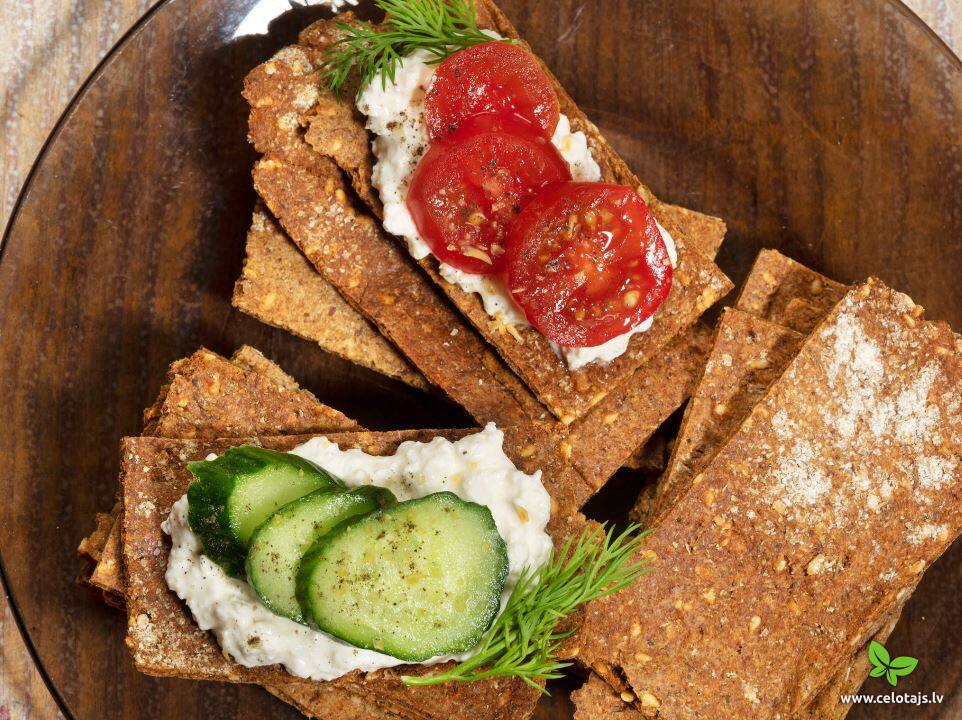 |
RYE CRACKERS. Crackers are a type of a very famous traditional Scandinavian bread, which is also gaining more and more popularity in Latvia. The dough is made up of rye flour, buttermilk or kefir, a little bit of oil, bicarbonate of soda, salt and sugar. If desired, caraway seeds can also be added. It is also recommended to add ground flaxseeds, as they help to form smoother dough. It is important that the dough can be rolled well, because the thinner the dough is, the more delicious the crackers will be. Before putting the baking tray in the oven, the rolled out cracker dough can also be sprinkled with water and a mix of seeds. After baking, your massive cracker should immediately be cut up and left to dry out a little. Alternatively, you can also break it into irregular pieces, once it has completely cooled down. These crackers can be eaten on their own or with various toppings, just like sandwiches. |
|
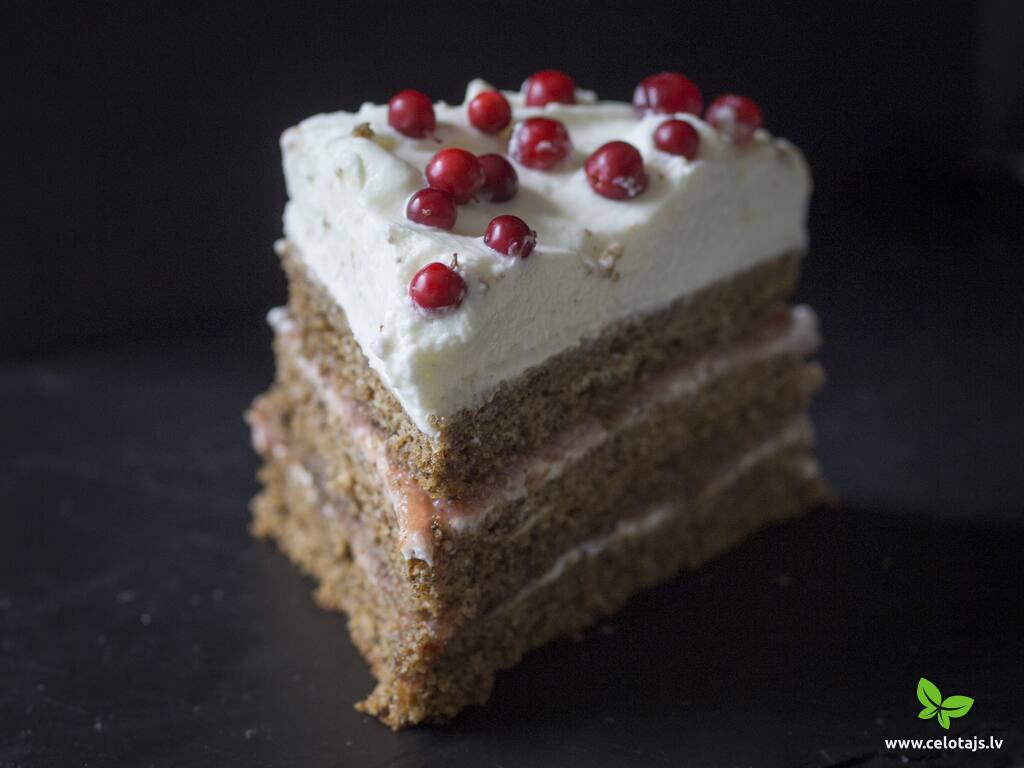 |
RYE BREAD LAYER CAKE. Rye bread cake is an integral part of Latvian national cuisine and it is often baked to celebrate National Independence Day. Rye symbolises the strength of the Latvian countryside, berries – the taste of the Lat - vian forest, and cream – a holiday greeting from the Latvian cows. The recipe is as follows. First, whisk egg yolks with sugar. Then add rye breadcrumbs and fold in stiffly whisked egg whites. Pour the batter evenly on a baking tray and bake the cake layers either in round or square shapes. Once they have cooled down, stack the layers on top of each other, covering each layer with lingonberry, cranberry, or rhubarb jam, as the jam you use must be strong and slightly sour. The top is then decorated with whipped cream and fresh berries. Apart from this classic re - cipe, there are a variety of modern variations, adding a drop of aromatic alcoholic drink to enhance the flavour, or making another kind of filling, or making the layers only from egg whites and rye bread – the variations are endless. You could also make a Swiss roll cake with rye bread layers, cream and berries. |
|
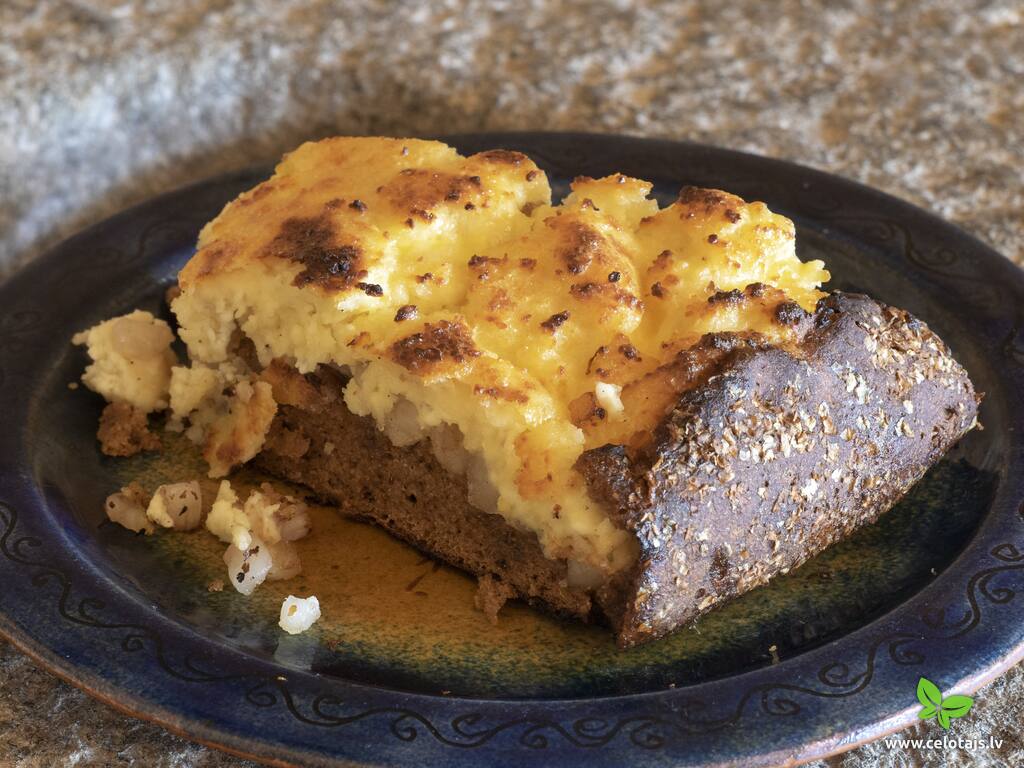 |
SHEPHERD'S BREAD. Shepherd’s bread is a Latgalian speciality with a story. In the past, these small bread buns were given to the young shepherds when they left home to spend the whole day in the fields and in the meadows. These small buns were made using a dough scraper. Before baking, the middle was filled with either small pieces of bacon or curd, so that the bread could then be packed up for the young shepherd’s lunch. Rye bread has this peculiarity that, unlike with wheat bread, it should not be eaten hot, right after baking. However, this can prove to be quite difficult, as the delicious aroma of rye bread spreads across your home. It can be extremely hard to wait for the next day without having a small bite. This is where the shepherd’s buns come in very handy, as you can make several smaller buns from the same dough too. These will cool down quicker and can be consumed on the day of baking. |
|
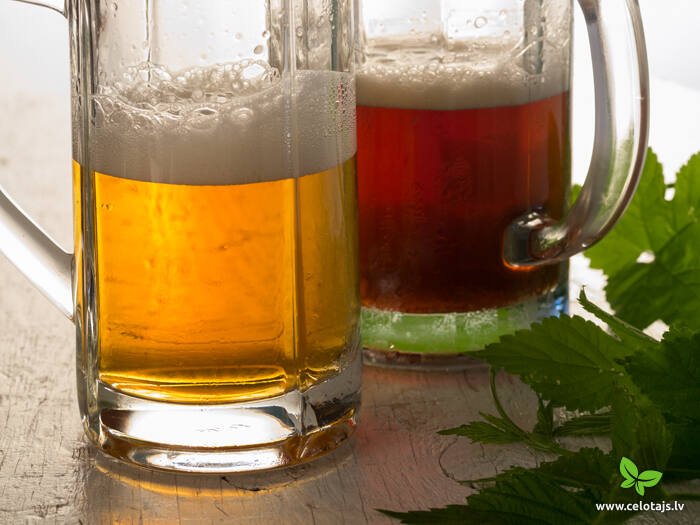 |
RYE BREAD KVASS. Kvass is a very old traditional drink that has a simIlar brewing history to beer. It is made from stale slices of rye bread, soaked in boiling water. Sugar or honey and yeast are then added, thus starting the fermentation process. Properly made and fermented kvass quenches thirst and refreshes greatly. While its flavour can generally be described as sweet, it must also have a hint of sourness and slight bitterness. A good kvass is foamy, rich and sparkling. Naturally fermented kvass can be stored for a very short time, even in a refrigerator, but it has incomparably better flavour qualities than the industrially produced versions of the drink. |
|
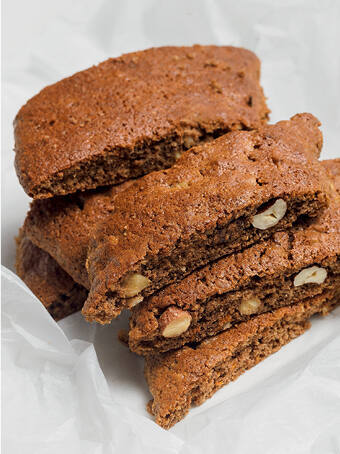 |
PUMPERNICKELS. This is an ancient recipe for a treat that is delicious and aromatic. It will keep fresh for a long time, and the recipe is simple enough for a beginner. |
|
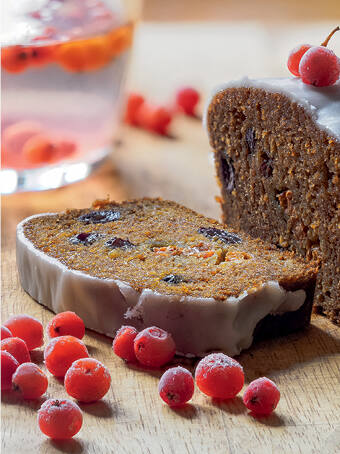 |
RYE AND MOUNTAIN-ASH CAKE. Rye flour can be safely used in baking cakes to substitute the largest proportion of wheat flour. In this cake, frozen mountain-ash is added to the traditional ingredients. |
|
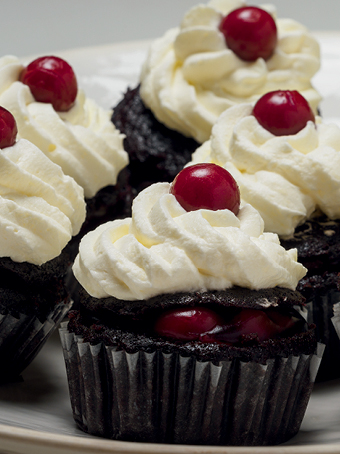 |
RYE MUFFINS WITH CHERRIES. The strong flavour of rye melds well in these muffins with sour cherries from Latvia and gentle whipped cream. If only adults are to eat the muffins, add some rum or kirsch to the mixture. |
|
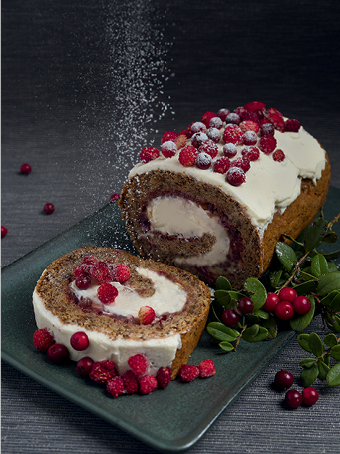 |
RYE ROLL BISCUIT CAKE. A rye roll biscuit cake or layered cake filled with wild berries and whipped cream is a classic of Latvian cuisine. Depending on the season, such cakes are filled with wild or garden strawberries, blueberries, mountain-ash, cranberries, or other berries. |
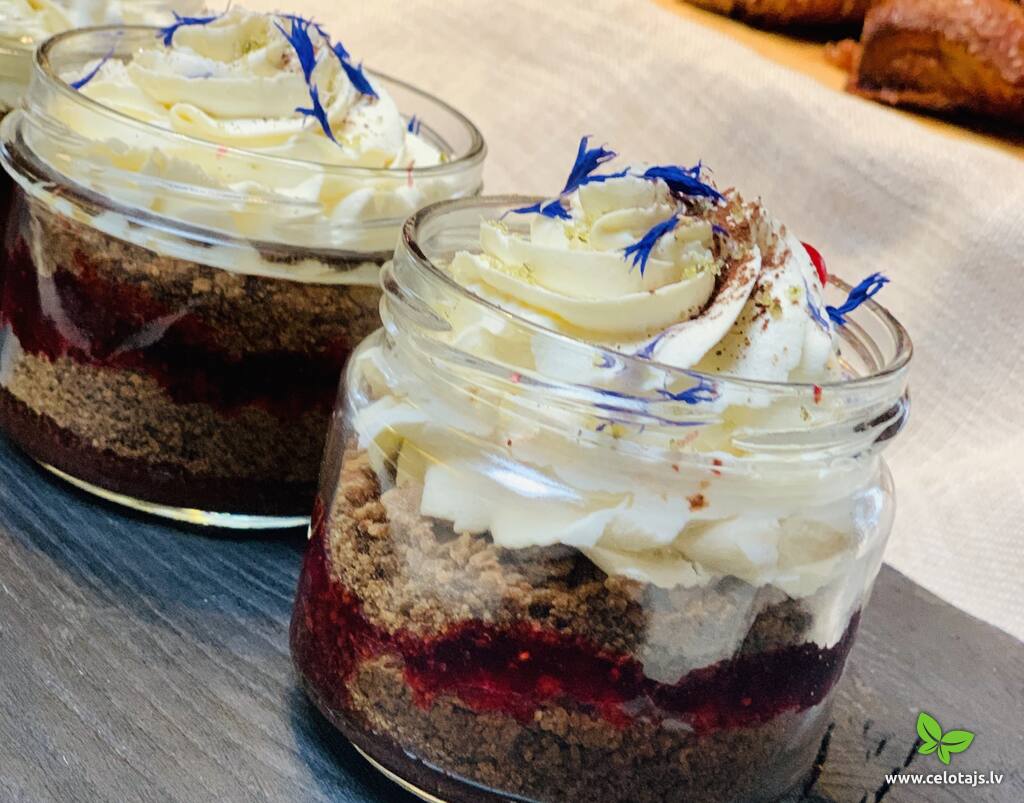 |
LAYERED RYE BREAD DESSERT. In some parts of Latvia, this rye bread dessert is also called ambrozijs. It is made from stale rye bread, which is grated and fried in a pan with a little bit of butter, some sugar and cinnamon. Whipped cream and jam made from sour berries are used in this dessert. Usually, lingonberry, cranberry or black currant jam is used. This layered dessert can be made both in a large glass container and in smaller serving bowls. It is made by alternating layers of breadcrumbs, cream and jam. If the breadcrumb layers are thin, the dessert can be eaten straight away, fully enjoying the crispness of the rye bread - crumbs. If, however, you would prefer for the bread layers to be soft, give the dessert some time to rest. |
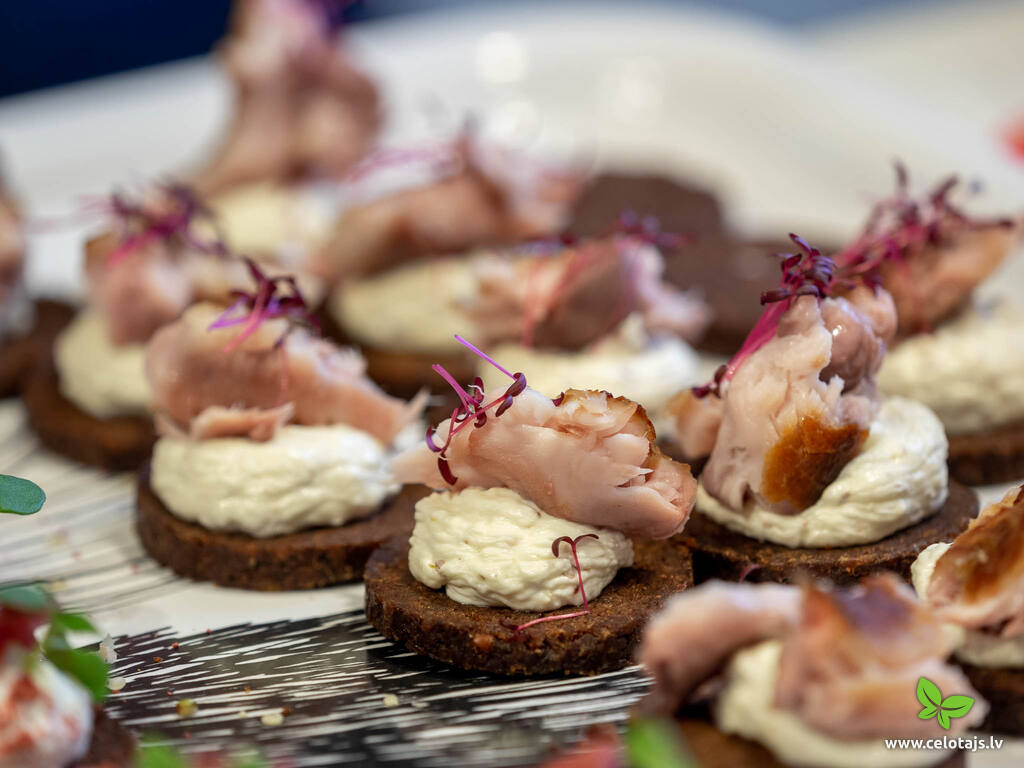 |
RYE BREAD APPETISERS. At a Latvian table, a thick slice of rye bread with some toppings can be served for breakfast, an afternoon snack or dinner, and also as an appetiser during celebrations. Fresh butter, honey and milk have always gone hand in hand with rye bread. It can also be enjoyed with a slice of smoked bacon, curd and sour cream, roasted hemp, herbs, or radishes. Rye bread also tastes amazing in combination with salted or smoked fish, sprats, cheese, tomatoes and cucumbers. For special occasions, rye bread appetisers are made. They are smaller in size and tend to have more refined ingredients as toppings, for example, a variety of spreads, jams, seeds, sprouts, rich spices and lemon slices. |
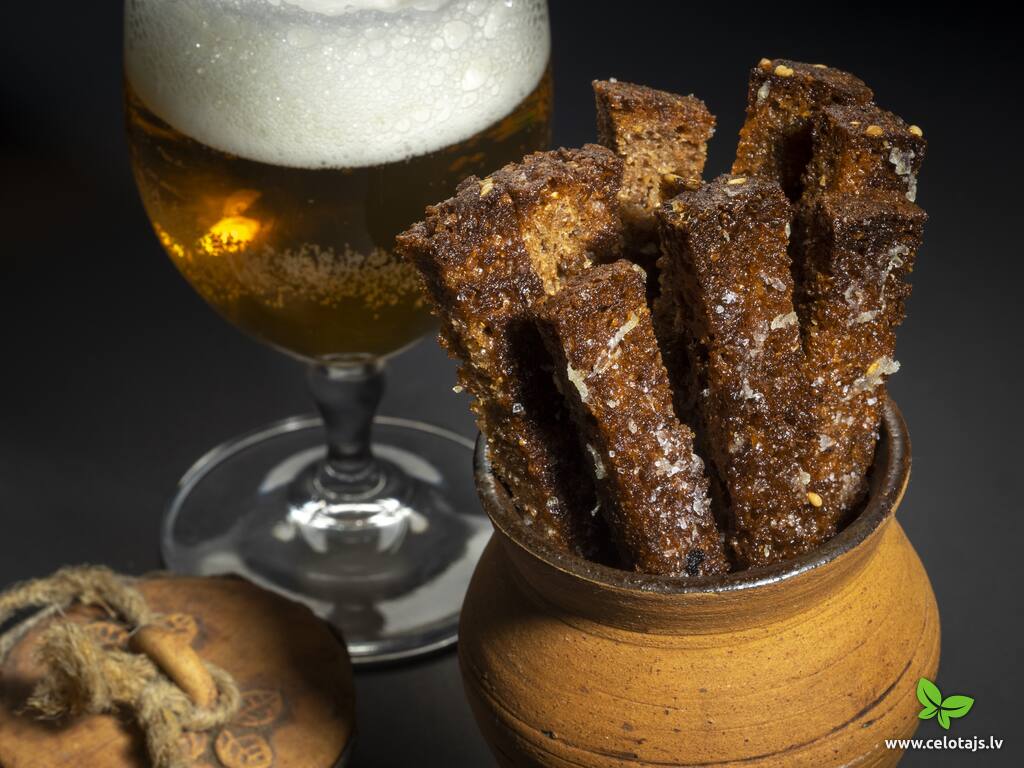 |
RYE CROUTONS. The strong aroma of rye croutons with hints of rye, malt, caraway seeds, and garlic, will never fail to make your mouth water. Rye croutons are made by chopping rye bread slices into long pieces and fry - ing them in vegetable oil until they become crunchy and beautifully brown. Later, freshly ground Latvian garlic and coarse salt are added, letting the flavours soak into the bread slightly. Croutons traditionally accompany cold beer, however, they taste great on their own too. Often they are served together with other savoury nibbles, such as cheese slices, pick - led vegetables, spicy dips, and nuts. Croutons can be stored for a long time, making them the perfect souvenir |
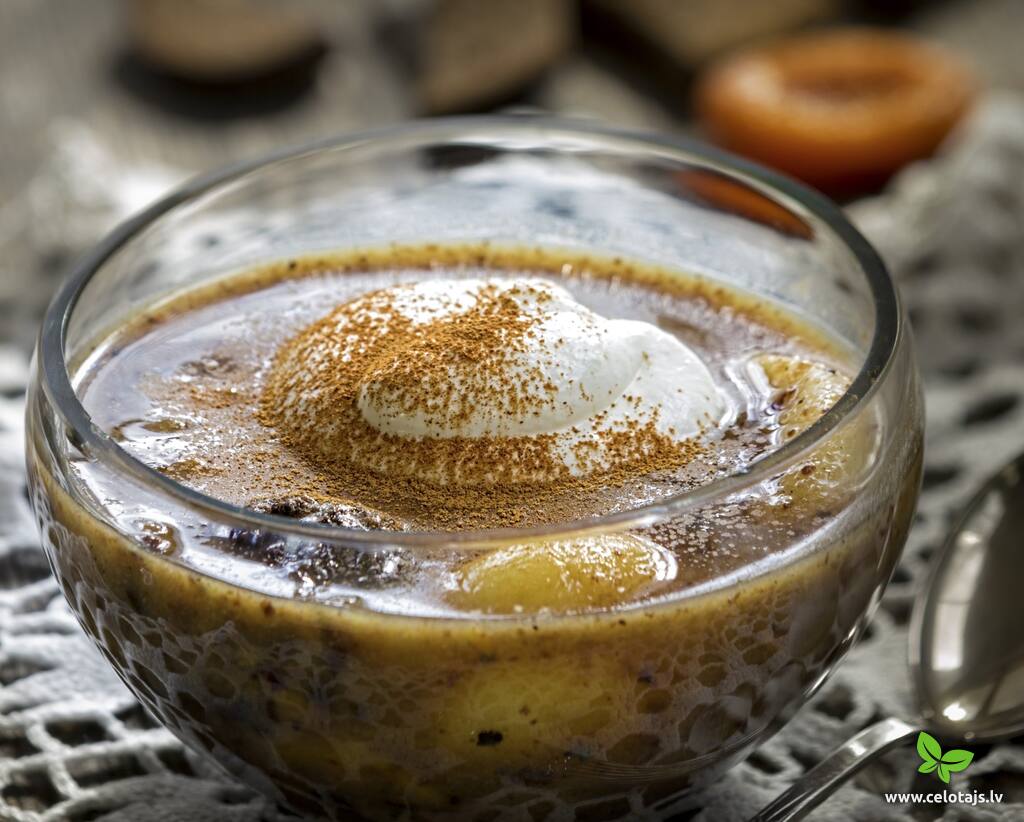 |
SWEET RYE BREAD SOUP. Bread soup is one of the most popular Latvian desserts and the traditional basic recipe is passed down from generation to generation. It is made at home, in country pubs and in guest houses, and when tailored to the requirements of modern cuisine, also in fine restaurants. Bread soup is made from stale rye bread by first roasting it, then soaking it and, finally, by cooking it together with dried apple slices, black plums, apricots and raisins. The thickness of the soup may vary slightly depending on the cook, but it is generally quite thick and has an obvious texture of rye bread. Commonly used spices are sugar and cinnamon. Sometimes a drizzle of cranberry juice may be added for a more sour flavour. The dessert is served chilled together with whipped cream. |
Atbalsta Zemkopības ministrija un Lauku atbalsta dienests
Projekta nosaukums: Kulinārā tūrisma produkts "Rudzu ceļš". Projekta numurs: 19-00-A01630-000002.
Partneri: LLTA "Lauku ceļotājs", SIA "JS Caunītes" Vineta Cipe IK "Dzīles", z/s "Bērziņi", z/s "Buliņi", z/s "Klajumi".
Vairāk informācijas par projektu “Rudzu ceļš”
Vairāk informācijas par Eiropas Lauksaimniecības fondu lauku attīstībai pieejams EK tīmekļa vietnē
